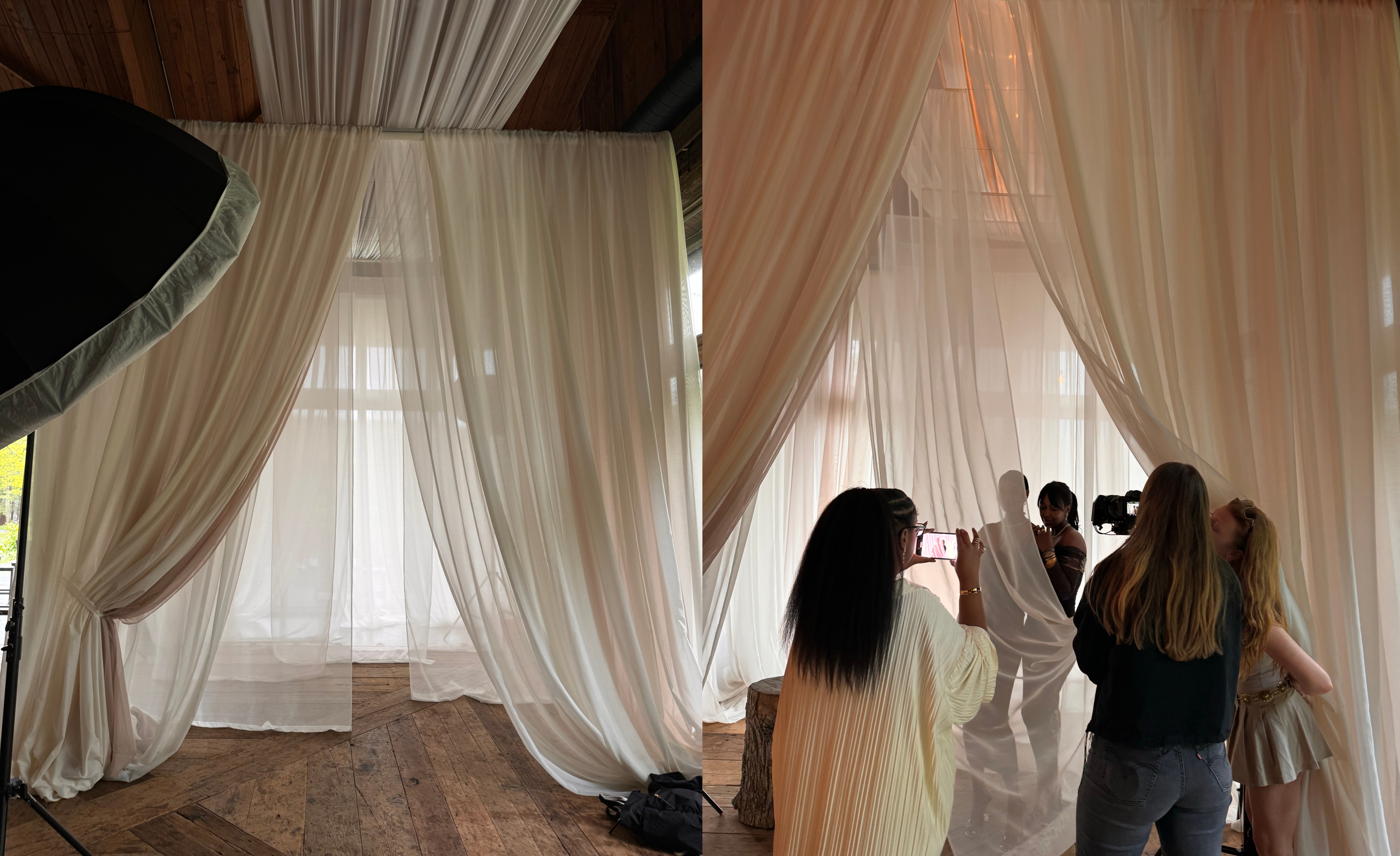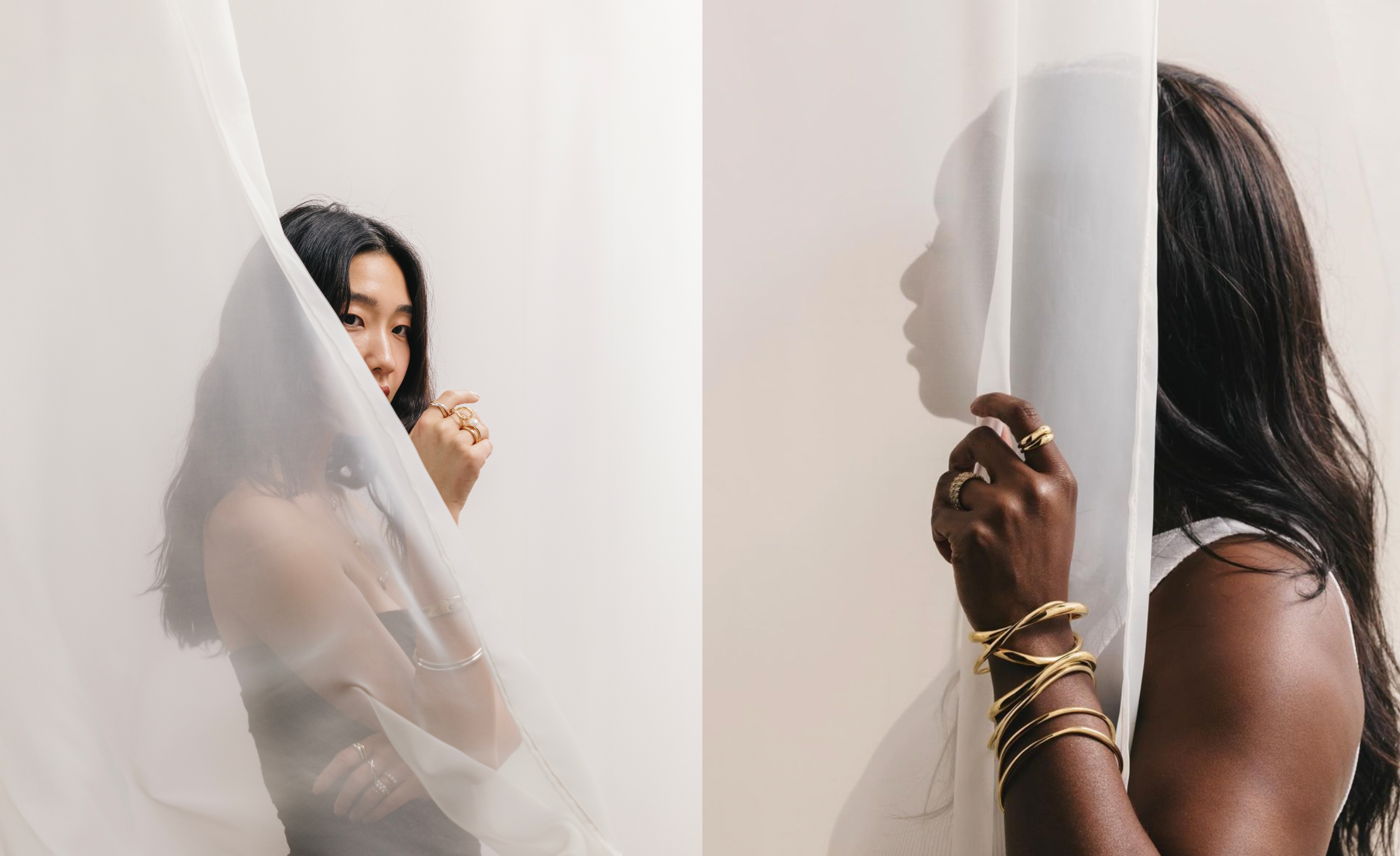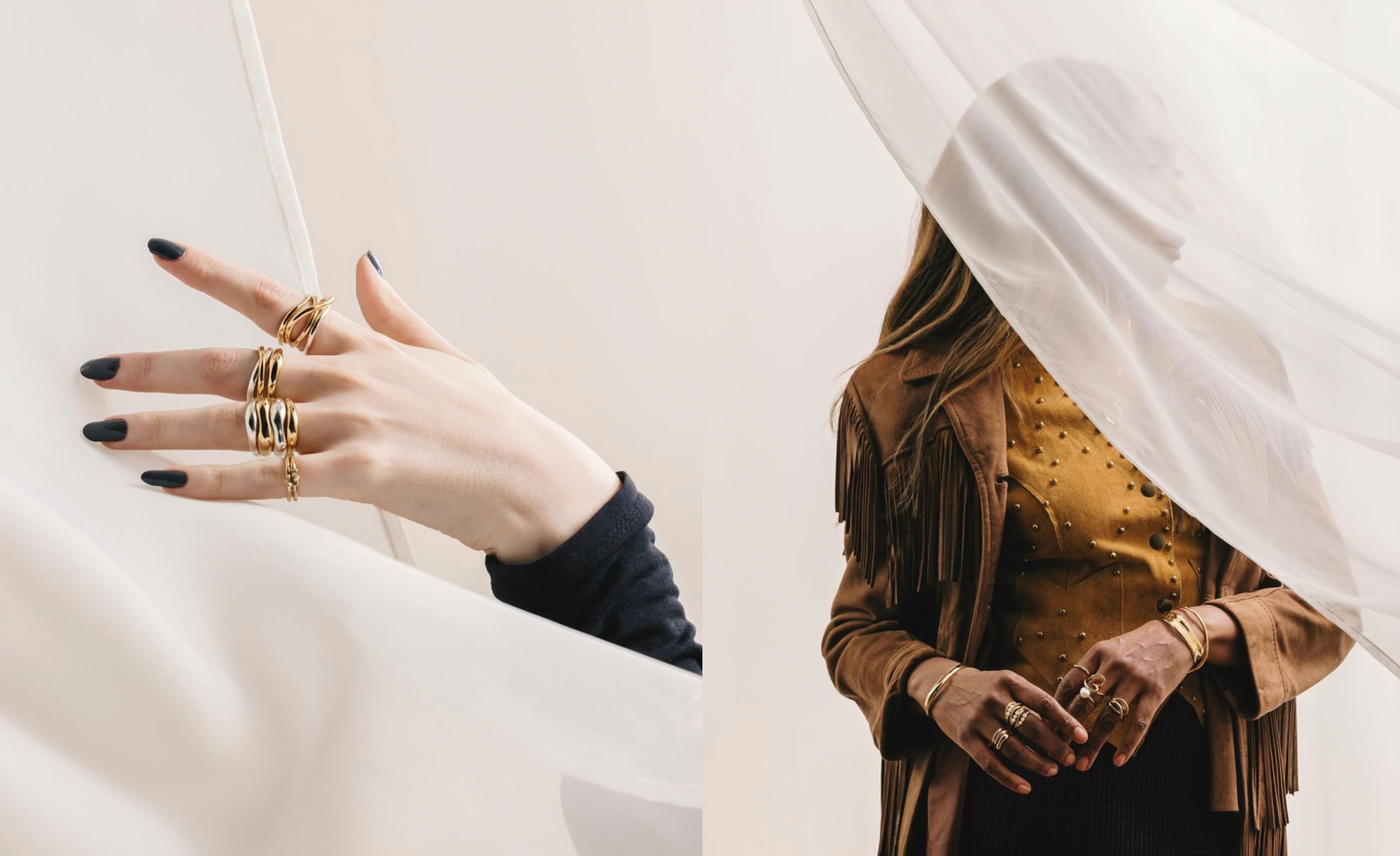Beyond My Lens: Photographer Katie Levine’s Storytelling Podcast, Supported by Narrative
Blog
By Sophie Sahara
When my jewelry client approached me with a vision for their event, I knew I was in for a challenge—and I couldn’t have been more excited.
The brief was clear: create a chic, elevated, and dynamic on-site studio setup that would capture the essence of their brand. The event was set in upstate New York, featuring guests who were influencers and would be showcasing the jewelry they were gifted and wearing. With guests inevitably snapping their own photos on their iPhones, I had to ensure my shots were a cut above.
This wasn’t just about capturing beautiful images; it was about creating something memorable, something that would truly elevate the experience for everyone involved.
From the moment I received the client’s vision, I loved the vibe and aesthetic. They wanted to shoot through sheer fabric—a dreamy, airy look with lots of light and movement. As a photographer, I immediately saw the challenge: how to maintain the sharpness and clarity needed for a corporate jewelry client while shooting through fabric that could naturally mute details.
Knowing these two goals were at odds, I dove into testing. The fabric they sent me was wonderfully sheer, and I could see the potential. But creating a studio setup in an unfamiliar environment, with limited time, is always a unique challenge.
The event space itself was stunning—a corner setup with layers of sheer fabric paneling and large windows that let in natural light. Initially, I loved the idea of using that natural light, but I knew I would be shooting for several hours, from daylight until after sunset. In order to have consistency, I couldn’t use it. That meant relying on my trusty studio lighting.
My favorite element of studio lighting is my white 7-foot umbrella with a sock, paired with my Profoto B10s and B10 Pluses. It gives a beautifully diffused light similar to a softbox but without the hassle of assembly. I started by lighting the subjects from the front, but quickly realized that the light was also hitting the sheer fabric, which reflected the light and went opaque. My subject wasn’t lit properly and the jewelry wasn’t visible enough. With guests about to arrive, I had to pivot fast.

I brought my key light into the set as a hot side light, moving my subjects slightly back and the fabric forward to create separation. This way, the light would hit the subject, not the fabric. I had many hands (and some fans) helping to move the fabric, and the key was having one person keep it in subtle S-curve waves ensuring natural movement throughout the shoot.
After the lighting was successfully created, there were more challenges to navigate. With limited time for each subject, and plenty of eyes on set—including clients, event planners, and guests—I had to ensure everything ran smoothly and looked effortless. The tricky thing about shooting in this type of setup is that it's not only a production, but an event in and of itself. Part of the job was making sure that everyone was having fun and enjoying themselves, even in a high-pressure environment.
As I captured a few backlit moments, I couldn’t help but appreciate the beauty of the natural light. In a different setting, I would have loved to incorporate more of it, but in a studio environment, consistency is key. The photos need a sense of continuity and the controlled lighting ensured that every image had a cohesive look, which is one of the main strengths of studio setups.
In the end, my final setup included three lights: the key light from the right high side with a small two-foot white umbrella bouncing in, and two lights backlighting the scene—one with a direct bare bulb from the back corner and another two-foot umbrella from the other side. This setup gave the airy, light, and bright feel the client wanted while maintaining the clarity needed for the jewelry.
Had we been shooting more video, I would have gone with continuous lighting. In this situation, with other people around taking photos, I prefer to shoot strobe. With continuous lighting, anyone around could capture what I created, which separates me as the photographer from ownership of the set and of the image I’m creating. We all know people will be taking photos to capture their own memories; I simply ask that they take behind-the-scenes photos, rather than the exact image I’m shooting.
After the shoot, I quickly popped out my SD card and uploaded everything to my computer. We weren’t shooting tethered due to the many people moving around and the potential liability of a tripping hazard, but I wanted my clients to see the images immediately.
Using Narrative Select made the process so easy. I allowed my clients to make their preliminary choices in Select, then filtered out the rest. The clients then made their top picks, which I would finalize. They loved seeing their images right away, and they especially loved the Closeups Panel where they can see details of faces quickly. From Select, I shipped everything direct to Lightroom for final edits—a plus because the final images needed to be delivered the following morning.
The process was seamless, and by the next morning, everything was edited and ready for social media. The clients were thrilled, the images were exactly what they envisioned, and we had successfully created the vibe and feel they needed, even in a high-pressure environment.
This project was a perfect blend of creativity, quick thinking, and collaboration. Challenges push us to innovate, adapt, and ultimately create something truly special. The on-site studio setup wasn’t just about taking photos; it was about crafting an experience that everyone involved would remember.
For me, the real joy comes not only from meeting the client’s expectations but exceeding them. That makes all the hard work worthwhile.


Sophie Sahara is a South African photographer based in Toronto and New York. She specializes in fashion, beauty, product, and lifestyle imagery and motion. After completing her Bachelor of Arts Honors in Drama at Queen's University in Kingston, Canada, she graduated with her Masters in Fine Arts Photography at Parsons School of Design in New York. Her clients include 818 Tequila, Vogue, Samsung, Netflix, Theory, and Urban Outfitters, among others. Check out her work on Instagram and TikTok.